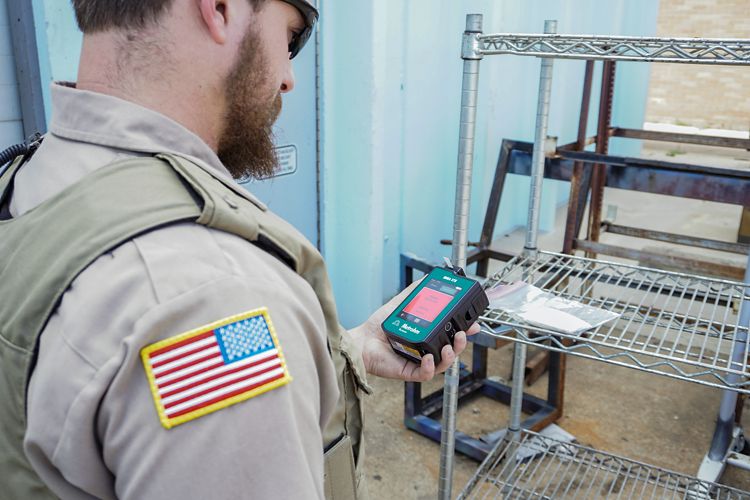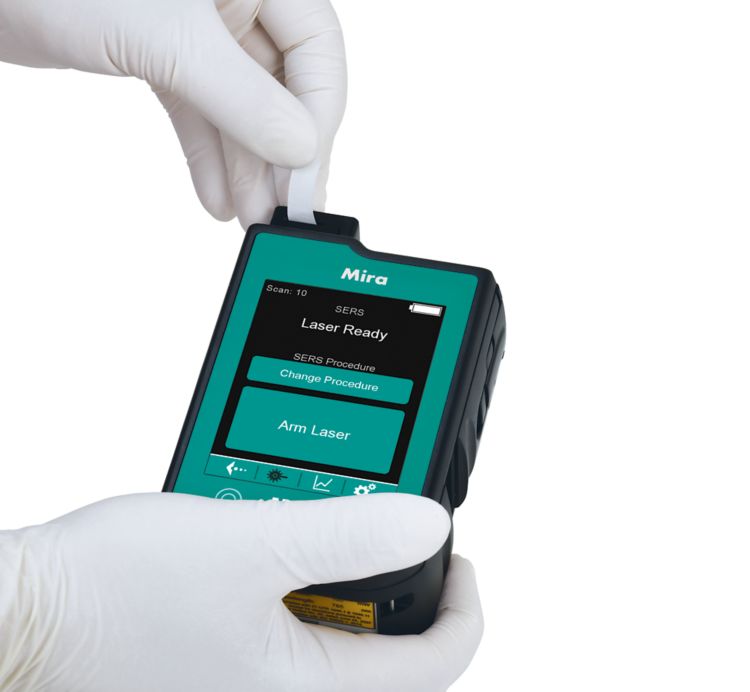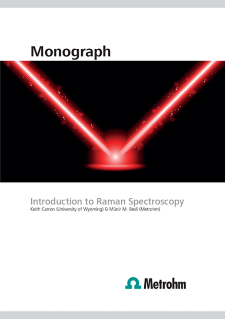Raman spektroskopie
Ruční a přenosné Ramanovi spektrometry, Surface-enhanced Raman Scattering (SERS) analyzátory vhodné pro identifikaci a verifikaci materiálů.
Whatever your requirements – we have the right Raman instrument for you
Our portfolio of Raman spectroscopy instrumentation includes handheld Raman spectrometers for in-field use, benchtop Raman spectrometers for measurements in the laboratory, and process analyzers for in-line process development. Our Raman instruments cater various industries, from defense and security to food, pharma, and more. Use the filters to refine your search and find the perfect Raman spectroscopy equipment for you.
Are you looking for NIR spectrometers or hyphenated spectroelectrochemistry solutions? Go to our NIR spectrometers or EC-Raman analyzers
MIRA XTR
Špičkový ruční Raman pro bezpečnou identifikaci neznámých materiálů v terénu: kompaktní, flexibilní, chytrý a odolný.
TacticID
Ruční Ramanův přístroj pro identifikaci chemických látek, výbušnin, narkotik a mnoha dalších toxických průmyslových chemikálií a materiálů v terénu.
i-Raman
Přenosné Ramanovy spektrometry nabízející flexibilní vzorkování a vysoce kvalitní výsledky, ať už provádíte analýzu kdekoliv.
MIRA P
Prvotřídní ruční Raman pro rychlé ověření surovin na místě: snadné, rychlé, flexibilní a transparentní.
MISA
Prvotřídní přenosný systém pro rychlou stopovou detekci kontaminantů v potravinových matricích v terénu: snadný, rychlý, flexibilní a citlivý.
NanoRam
Nejmodernější ruční Ramanův nástroj pro nedestruktivní identifikaci a ověřování vstupních surovin, jako jsou API, pomocné látky a meziprodukty.
PTRam
Přenosný samokalibrační proces vývoje Raman.
Věděli jste že?
Všechny akcie Metrohm AG vlastní «Metrohm Stiftung», nezisková nadace věnovaná podpoře filantropických a charitativních projektů ve Švýcarsku.
Zobrazit další
Metrohm Spectro – Robust Raman spectrometers

Metrohm Spectro, Inc. is composed of the photonics and spectroscopy companies of the Metrohm group including Metrohm Raman, B&W Tek, and Innovative Photonics Solutions. Metrohm Spectro develops and manufactures high-performance stabilized lasers, modular spectrometers, and handheld and benchtop Raman analyzers.
- Get all you need for your Raman analysis from one provider, from the Raman spectrometer and the accessories to Raman libraries and software.
- Rely on expert know-how and innovative solutions.
- Benefit from our global presence in over 80 countries for local support by our service and application experts.
High quality and innovation are key drivers of the development and production process at Metrohm Spectro. The innovations include:
- Raman Concatenation for fluorescence-free spectrum collection and improved sensitivity and selectivity of your measurement. Download the brochure for more information: Raman Concatenation (8.000.5413, PDF, 292 KB)
- MIRA XTR as the first 785-nm handheld Raman analyzer that can deal with fluorescent samples. Go to MIRA XTR
- Orbital Raster Scanning (ORSTM) to overcome low resolution, poor sensitivity, and sample degradation while still interrogating a large sample area when analyzing heterogeneous samples. Learn more in the application note Orbital Raster Scanning: Safer, more representative sampling with 785 nm Raman
- IBEX CBRNE Robot is a quadrupedal robot equipped with a standoff Raman spectrometer (MIRA XTR) and a suite of environmental sensors. These fully integrated systems can safely perform preliminary reconnaissance – scan an environment, identify materials, and report back on specific conditions. Learn more in the brochure IBEX CBRNE Robot (8.000.5420, PDF, 280 KB)
Raman spectrometer – FAQs
What is a Raman spectrometer?
A Raman spectrometer is an analytical instrument used to measure the Rayleigh scattering effect, which is a type of light scattering that occurs when light interacts with matter. Raman analyzers are powerful tools for non-destructive analysis and characterization of a wide range of materials, providing valuable insights into their molecular composition and structure.
A Raman spectroscopy machine consists of three components: the laser, the spectrometer itself, and the sampling interface. In a Raman spectrometer from Metrohm, all three components are developed and manufactured by Metrohm Spectro.
A Raman laser has a narrow linewidth, small form factor, low power consumption, and an extremely stable power and exciting wavelength output. The precision-engineered Raman spectrometer is characterized by a high resolution, low noise, small form factor, and low power consumption. The sampling interface allows for precise, easy, and safe sampling. Metrohm offers various sampling interfaces and attachments to automate sampling in any situation from trace detection to through container analysis to data collection from across the room.
Blog article: FAQs about Raman spectroscopy – Theory and usage
How does a Raman spectrometer work?

The laser beam of the Raman analyzer is typically directed onto the sample, and the Raman scattered light is collected and directed into the spectrometer. The spectrometer disperses the scattered light into its different wavelengths, which are then detected by a sensitive detector.
The resulting Raman spectrum, which represents the intensity of scattered light at different wavelengths, provides information about the molecular vibrations and can be used to identify substances or study molecular interactions.
What is a Raman spectrometer used for?

Raman spectrometer instrumentation is successfully applied for identifying unknown materials and verifying or quantifying known materials. Raman spectroscopy is a non-destructive analysis technique that allows for fast and safe analysis, as no sample preparation is needed and, in some cases, samples can even be analyzed in their original packaging.
Applications of Raman spectroscopy include raw material verification, quality control of incoming goods, identification and analysis of active pharmaceutical ingredients (APIs), additives and excipients, and identification of illicit or counterfeit substances such as drugs.
Learn more in our application notes for Raman spectroscopy
Blog article: FAQs about Raman spectroscopy – Applications
Blog article: Recipes with Raman (Raman spectroscopy in the food industry)
Blog artcile: MIRA DS in Action – Detecting drugs safely in the field
What is the difference between handheld and laboratory Raman systems?
Handheld Raman systems are small, lightweight, easy-to-use, and require little to no training. Handheld Raman systems are capable of fast analysis and identification of unknowns in the field.
Laboratory Raman systems offer a higher resolution and sensitivity compared to handheld Raman systems. With the higher sensitivity of benchtop Raman systems, it is also possible to quantify substances down to low concentrations, while handheld Raman systems are often used to fulfill identification and qualification needs.



